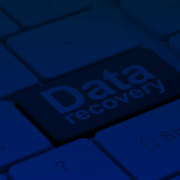Hurricane Harvey and Other Disasters: Why Your Business Needs a BDR Plan
In August of 2017, the Houston area experienced around 50 inches of rain in a four-day period due to Hurricane Harvey. The storm was devastating. Lives were lost and homes and businesses were destroyed.
Even those businesses that remained physically intact suffered huge losses because they experienced power and data outages, forcing them to shut down. Few companies emerged unscathed, but those companies with a BDR (backup and disaster recovery) plan minimized their losses.
In fact, many of the companies with a plan in place were able to get back to business quite quickly after the rain stopped. This fast response allowed construction companies and other rebuilders to help the entire city recover.
What is a BDR?
A BDR is a detailed plan to recover and restore your data when disaster strikes. A BDR includes multiple strategies, including comprehensive data backup and methods to minimize downtime. A good BDR plan will ensure that your company stays productive during extreme conditions and lets you work even if your office is destroyed.
Related: The Cloud: Why It’s More Important than Ever
How Does a BDR Plan Work?
A BDR plan will typically call for storing copies of files and other data in separate locations. If business computers are damaged or hacked, you can retrieve all of your important information, usually through a cloud service.
Disaster recovery may include recovering a physical or virtual server by using a virtual machine. This process restores files and other data that may have been damaged.
Why You Need a BDR Plan
Every area in the country is vulnerable to some sort of disaster, whether it be weather-related or a result of hacking. Your company needs a BDR for multiple reasons, including the following:
Finances
The downtime resulting from a data disaster can put your business in the red or even cause it to close. In fact, downtime costs small businesses up to $8,600 per hour. Though the number grows for larger organizations, the core message is the same – any amount of downtime can be financially devastating to your business.
Inevitable Issues
Your company will face system issues at some point. Hardware and software are prone to failure. Cyberattacks are all too common. Very few businesses exist without at least one major data crisis, and some must endure multiple failures.
In short, your business can’t avoid disasters, but you can plan for them.
Related: 3 of the Worst IT-related Disasters Ever (And What You Can Learn From Them)
Customer Expectations
Customers have little patience for system failure. They have come to expect constant access to your company, often through the internet. If you are not available to meet their needs 24/7, they will find another company that will.
After Hurricane Harvey, many small businesses suffered from terrible physical damage as well as system failures. Six months out from the hurricane, some businesses were still struggling.
Those with a BDR plan were able to quickly resume service again.
No business can afford to function without a clear disaster plan that safeguards their data and their servers. If you do not have a detailed plan, a disaster can put you out of business. If you have not made preparations for a crisis, consult with IT specialists to find out how to get started.























